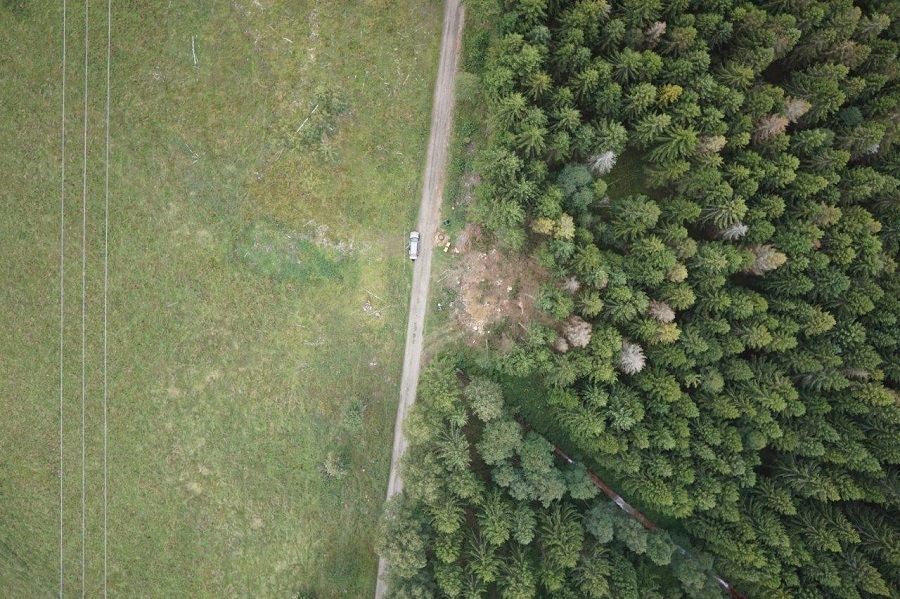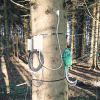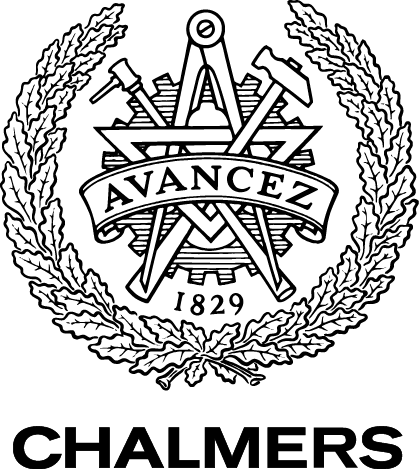The forest
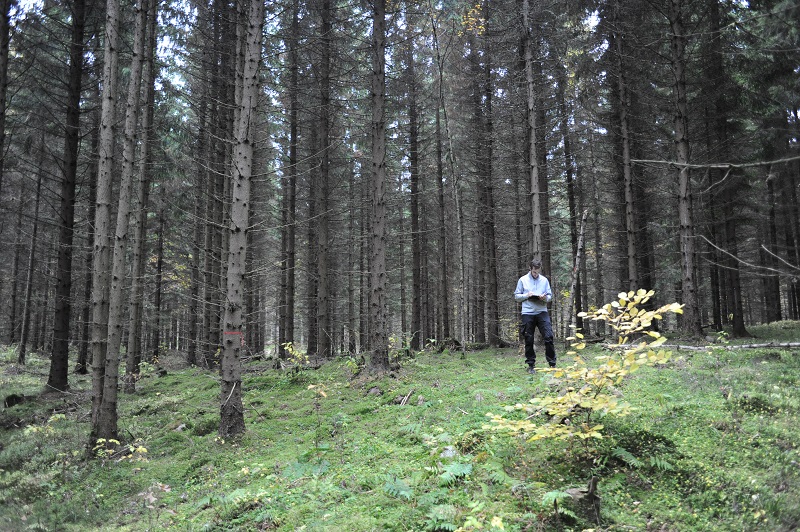
Dr. Maciej Soja during a field study in the Remningstorp experimental forest site.
The BorealScat experiment is situated in the Remningstorp experimental forest site located in the south of Sweden. This 1200 ha of productive forest land was once owned by Sven Wingquist, PhD (1876 - 1953), a Swedish engineer and inventor who is today famous as one of the founders of Svenska Kullagerfabriken (SKF), the world's largest ball bearing producer. Wingquist had a strong interest in forests and forest research and in 1946 he and his wife Hildur donated the property to the Hildur and Sven Wingquist's Foundation for Forest Research with the goal to develop Remningstorp into a forest laboratory and research institute.

Location of Remningstorp in southern Sweden.
Scientific research in Remningstorp has over the years included projects in forest genetics, exotic species, fertilization, forest management and areal photogrammetry and classification. In recent years research has been focused on using remote sensing and laser scanning as tools for forest classification, parameter estimation, forest planning and detection of storm damage. Today research in Remningstorp is more active than ever with the forest being managed by Skogsällskapet.
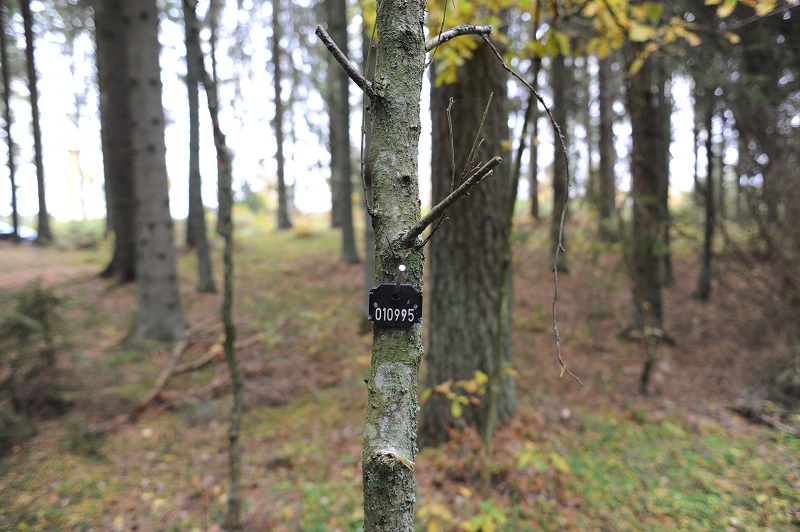
Remningstorp is still an active site for forest research.
The forest is divided in smaller regions called stands, consisting of similar tree species, biophysical characteristics (e.g., tree height and tree number density) and management procedures. As shown in the map below, stands can vary in size and shape. The prevailing tree species in Remningstorp are Norway spruce (Picea abies), Scots pine (Pinus sylvestris) and birch (Betula spp.).
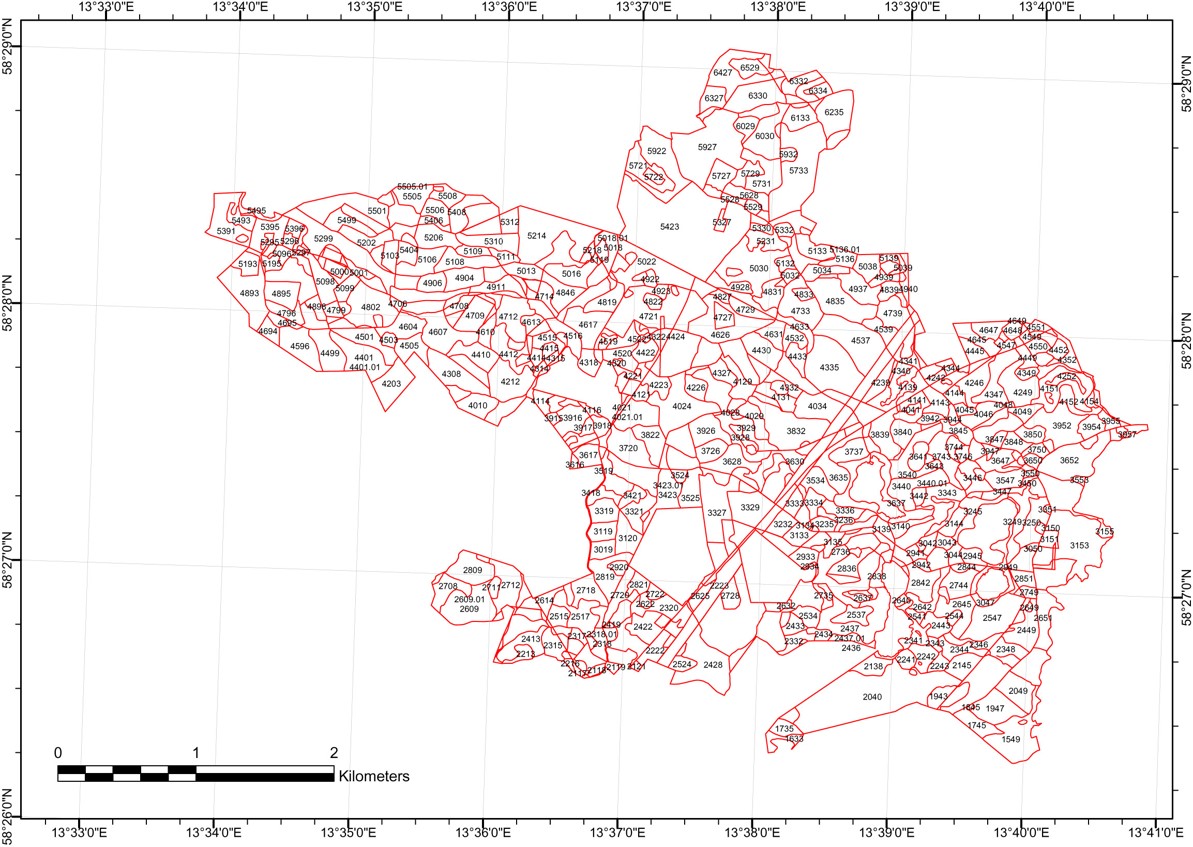
Division of the Remningstorp experimental forest into smaller stands of homogeneous forests.
In 2006 Remningstorp was used in the calibration and validation campaign for the Japanese Space Agency's (JAXA) ALOS SAR satellite. Large trihedral corner reflectors were therefore placed around the forest in open fields which are still used in radar remote sensing of the region. In 2007 and 2010 a series of airborne SAR images were taken for the ESA-funded BioSAR campaigns, in support of the BIOMASS satellite's feasibility study.

